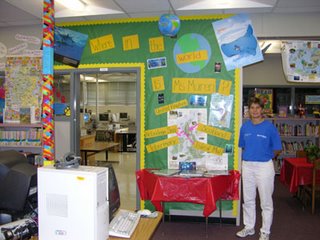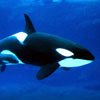Day 4 - Anchored in Loch Tarbert Jurar
Day 4 – Wednesday Lat 55° 57.584N Lon 55° 55.048W Anchored in Loch Tarbert Jurar after passing through the Sound of Islay. We are met with wind gusts up to 25 knots and rain. It is mighty chilly for the Floridean – the Brits are even wimping. We had a quiet tour of
The Sound of Jura but there was a peak time of sightings of porpoises earlier on in the day. After that it was pretty quiet on the mammal watches. Lots of birds though which were charted and then recorded. We are all finding our sea legs and nobody seemed to feel sick today. A BIG relief! As we were sailing by the coast of Jura we could faintly see the top of Northern Ireland on the horizon. Observations are an important tool of our research on the boat. Try this observation technique. Find a quiet place on campus and observe how many birds you can identify and count in 15 minutes in a radius of 0-90°.







0 Comments:
Post a Comment
<< Home